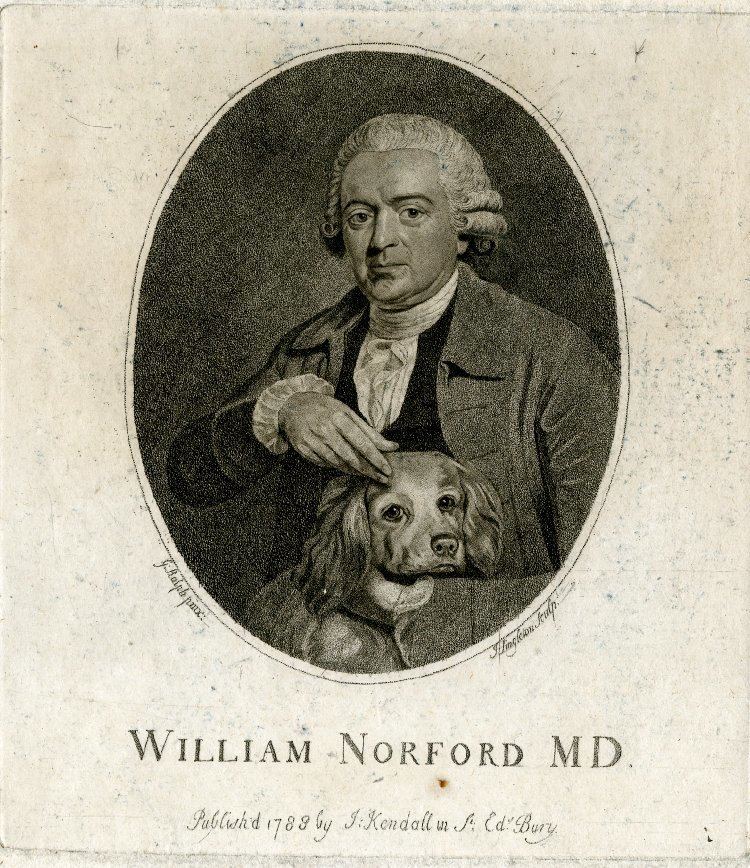Name William Norford | ||
 | ||
William Norford (1715–1793) was an English medical practitioner and writer.
Contents
Life
Norford was apprenticed to John Amyas, a surgeon in Norwich, and then began practice at Halesworth in Suffolk, as a surgeon and man-midwife. He married the daughter of a surgeon, and after some years moved to Bury St Edmunds. He became an extra-licentiate of the College of Physicians of London on 26 November 1761, and began to practise as a physician: on the strength of his licence he styled himself Doctor.
Norford died in 1793.
Works
Norford began to write inspired by the example of Dale Ingram, and some remarks of John Freke. His works were:
References
William Norford Wikipedia(Text) CC BY-SA
